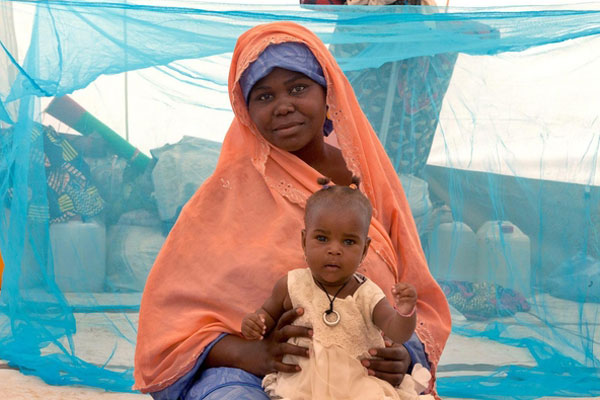
Child mortality rates have plunge by half since 1990.
16,000 children aged under five die each day
GENEVA/WASHINGTON, September 10, 2015
While child mortality rates worldwide have plummeted to less than half of what they were in 1990, around 16,000 children under five still die every day, according to a new report.
Under-five deaths have dropped from 12.7 million per year in 1990 to 5.9 million in 2015, marking a 53 per cent drop in mortality, this is not enough to meet the Millennium Development Goal of a two-thirds reduction between 1990 and 2015, explained the report Levels and Trends in Child Mortality Report 2015 released by Unicef, the World Health Organization, the World Bank Group, and the Population Division of UNDESA.
This is the first year the figure has gone below the six million mark, it added.
“We have to acknowledge tremendous global progress, especially since 2000 when many countries have tripled the rate of reduction of under-five mortality,” said Unicef deputy executive director Geeta Rao Gupta.
“But the far too large number of children still dying from preventable causes before their fifth birthday – and indeed within their first month of life – should impel us to redouble our efforts to do what we know needs to be done. We cannot continue to fail them.”
The report notes that the biggest challenge remains in the period at or around birth. A massive 45 per cent of under-five deaths occur in the neonatal period – the first 28 days of life. Prematurity, pneumonia, complications during labour and delivery, diarrhoea, sepsis, and malaria are leading causes of deaths of children under 5 years old. Nearly half of all under-five deaths are associated with undernutrition.
However, most child deaths are easily preventable by proven and readily available interventions. The rate of reduction of child mortality can speed up considerably by concentrating on regions with the highest levels – sub-Saharan Africa and Southern Asia – and ensuring a targeted focus on newborns.
“We know how to prevent unnecessary newborn mortality. Quality care around the time of childbirth including simple affordable steps like ensuring early skin-to-skin contact, exclusive breastfeeding and extra care for small and sick babies can save thousands of lives every year,” noted Dr Flavia Bustreo, assistant director general at WHO.
“The Global Strategy for Women’s, Children’s and Adolescents’ Health, to be launched at the UN General Assembly this month, will be a major catalyst for giving all newborns the best chance at a healthy start in life.”
The report highlights that a child’s chance of survival is still vastly different based on where he or she is born. Sub-Saharan Africa has the highest under-five mortality rate in the world with 1 child in 12 dying before his or her fifth birthday – more than 12 times higher than the 1 in 147 average in high-income countries.
In 2000-2015, the region has overall accelerated its annual rate of reduction of under-five mortality to about two and a half times what it was in 1990-2000. Despite low incomes, Eritrea, Ethiopia, Liberia, Madagascar, Malawi, Mozambique, Niger, Rwanda, Uganda, and Tanzania have all met the MDG target.
Sub-Saharan Africa as a whole, however, continues to confront the immense challenge of a burgeoning under-five population – projected to increase by almost 30 per cent in the next 15 years – coupled with persistent poverty in many countries.
“This new report confirms a key finding of the 2015 Revision of the World Population Prospects on the remarkable decline in child mortality globally during the 15-year MDG era,” said UN under-secretary-general for Economic and Social Affairs Wu Hongbo.
“Rapid improvements since 2000 have saved the lives of millions of children. However, this progress will need to continue and even accelerate further, especially in high-mortality countries of sub-Saharan Africa, if we are to reach the proposed child survival target of the 2030 Agenda for Sustainable Development.
“Many countries have made extraordinary progress in cutting their child mortality rates. However, we still have much to do before 2030 to ensure that all women and children have access to the care they need,” said Dr Tim Evans, Senior Director of Health, Nutrition and Population at the World Bank Group. “The recently launched Global Financing Facility in Support of Every Woman Every Child with its focus on smarter, scaled and sustainable financing will help countries deliver essential health services and accelerate reductions in child mortality,” Hongbo added.
Among the report’s findings:
• Roughly one-third of the world’s countries – 62 in all – have actually met the MDG target to reduce under-five mortality by two-thirds, while another 74 have reduced rates by at least half.
• The world as a whole has been accelerating progress in reducing under-five mortality – its annual rate of reduction increased from 1.8 per cent in 1990-2000 to 3.9 per cent in 2000-2015.
• 10 of the 12 low income countries which have reduced under-five mortality rates by at least two-thirds are in Africa.
• 5 in 10 global under-five deaths occur in sub-Saharan Africa and another 3 in 10 occur in Southern Asia.
• 45 per cent of all under-five deaths happen during the first 28 days of life. 1 million neonatal deaths occur on the day of birth, and close to 2 million children die in the first week of life. – TradeArabia News Service







